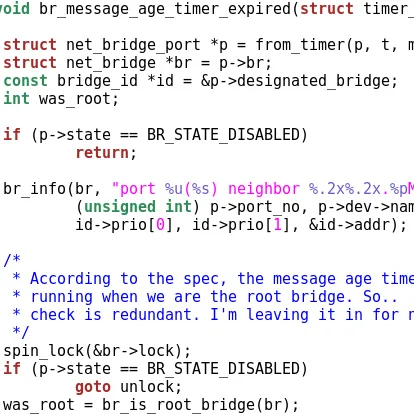VESA BIOS Extension DRM Kernel Driver Released

Herrmann already has been responsible for KMSCON - a DRM-based terminal emulator, a frame-buffer driver for kernel logs, Wayland virtual terminal work, and the Wayland native terminal emulator, as part of this CONFIG_VT-killing conquest for the Linux kernel.
This new driver uses the VESA BIOS Extensions for controlling the display device. This driver doesn't do much by itself but relies upon VBE and for the mode-setting to be done during the boot-process by the architecture/BIOS code. This is similar to how the VESA frame-buffer driver operates already within the Linux kernel and doesn't support run-time mode-setting.
The new open-source driver exposes a single CRTC+Encoder+Connector combination that user-space can use for tapping the VBE frame-buffer. The driver is rudimentary and doesn't support page-flipping and also requires the explicit marking of dirty buffers for updating to the frame-buffer.
Buffer objects are done using shared memory (SHMEM) and theoretically this driver could be extended to support PRIME.
David's commit message for this VBE driver says:
This driver is a very basic DRM driver with roughly the same functionality as vesafb but with a userspace API that doesn't suck. It is part of my effort to replace the linux console with a user-space replacement. This driver is basically meant as a replacement for vesafb+fbcon. I am still working on a "drmlog" driver which can show the kernel-log (panics, oopses, ...) on all connected monitors via the in-kernel DRM API. As I want to avoid using the fbdev API, I thought a VBE DRM driver would be a really useful thing to have as it works on all x86 hardware. I previously sent patches for an "fblog" driver which does exactly that by using the in-kernel fbdev notifier. However, the fbdev notifiers are so racy that I decided to do that with DRM instead.The driver is 1,195 lines of new code for the Linux kernel. The initial version of this VBE DRM driver can be found on the DRI mailing list. It's possible that it could move into the staging area for the Linux 3.9 kernel, although it's not clear if the initial driver will be ready for this next merge window.
This driver currently lacks any shared-resource-control so you should not use it in parallel with i915/nouveau/radeon/etc. We would have to add some mechanism to unload it when a conflicting driver gets loaded.
We might also add some driver-specific ioctls to introduce real modesetting like uvesafb provides so user-space can perform the VBE BIOS calls. However, I don't really care for this as I am totally fine with the vga= kernel command-line.
There is still some stuff missing (unload on conflicting drivers) which I will work on in the following weeks but I thought I'd first try to get some comments from other developers. I tested this on a nvidia nv50 and i915 gen3 card and it worked fine. Comments are welcome!
VESA BIOS Extensions are supported by basically every major graphics card on the market and this driver should work on basically any x86 system. VBE 3.0 has been a VESA standard going back to 1998.
Add A Comment

